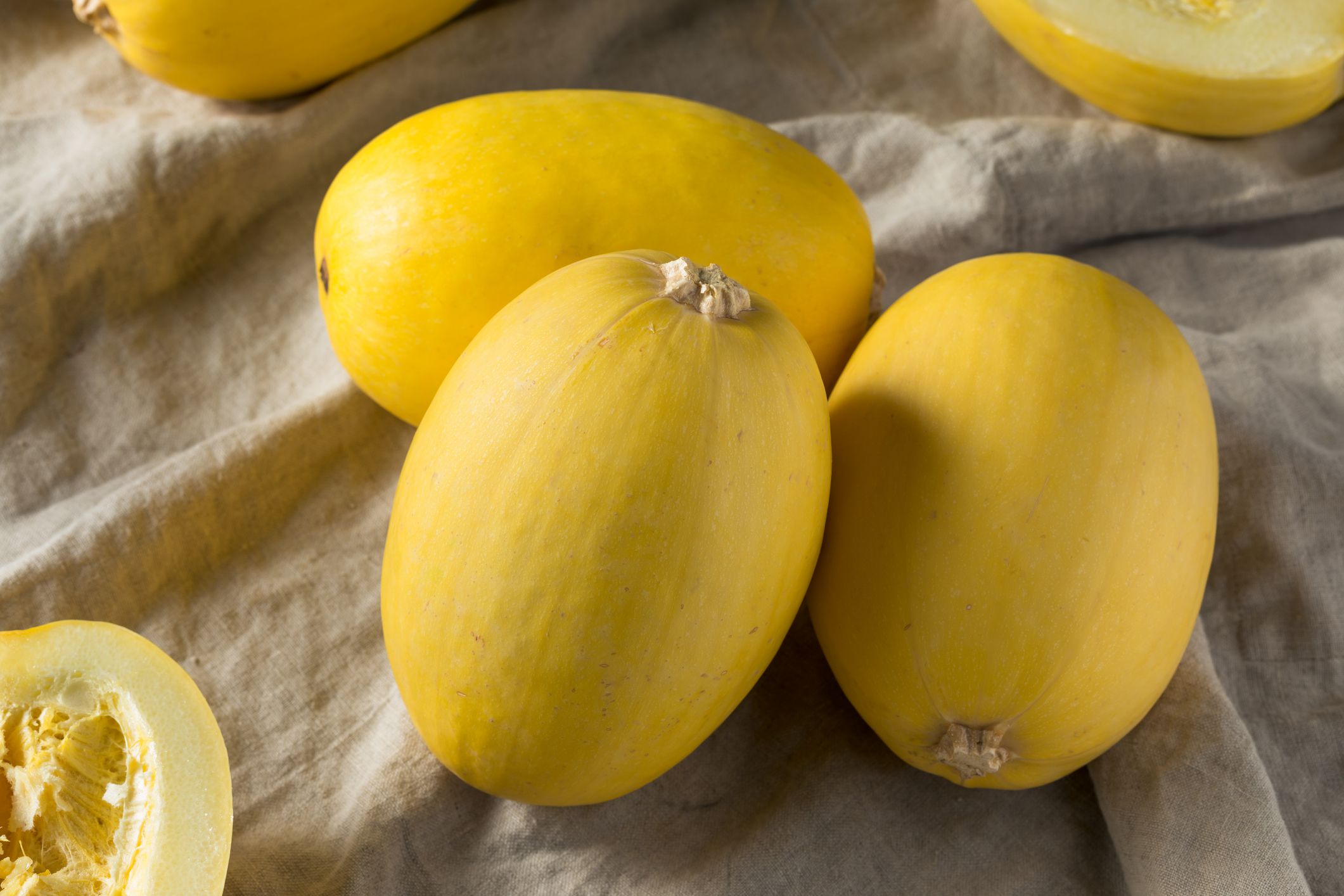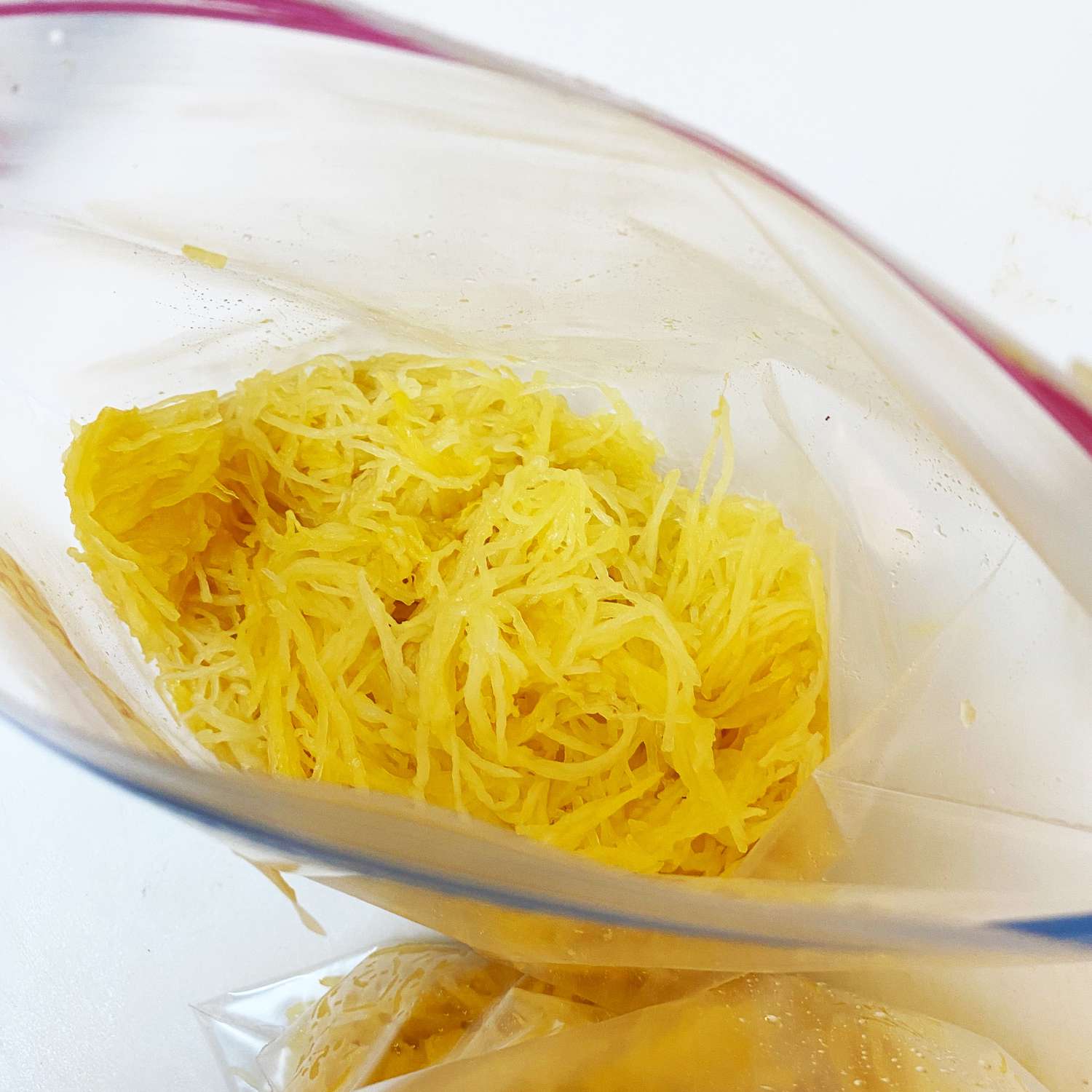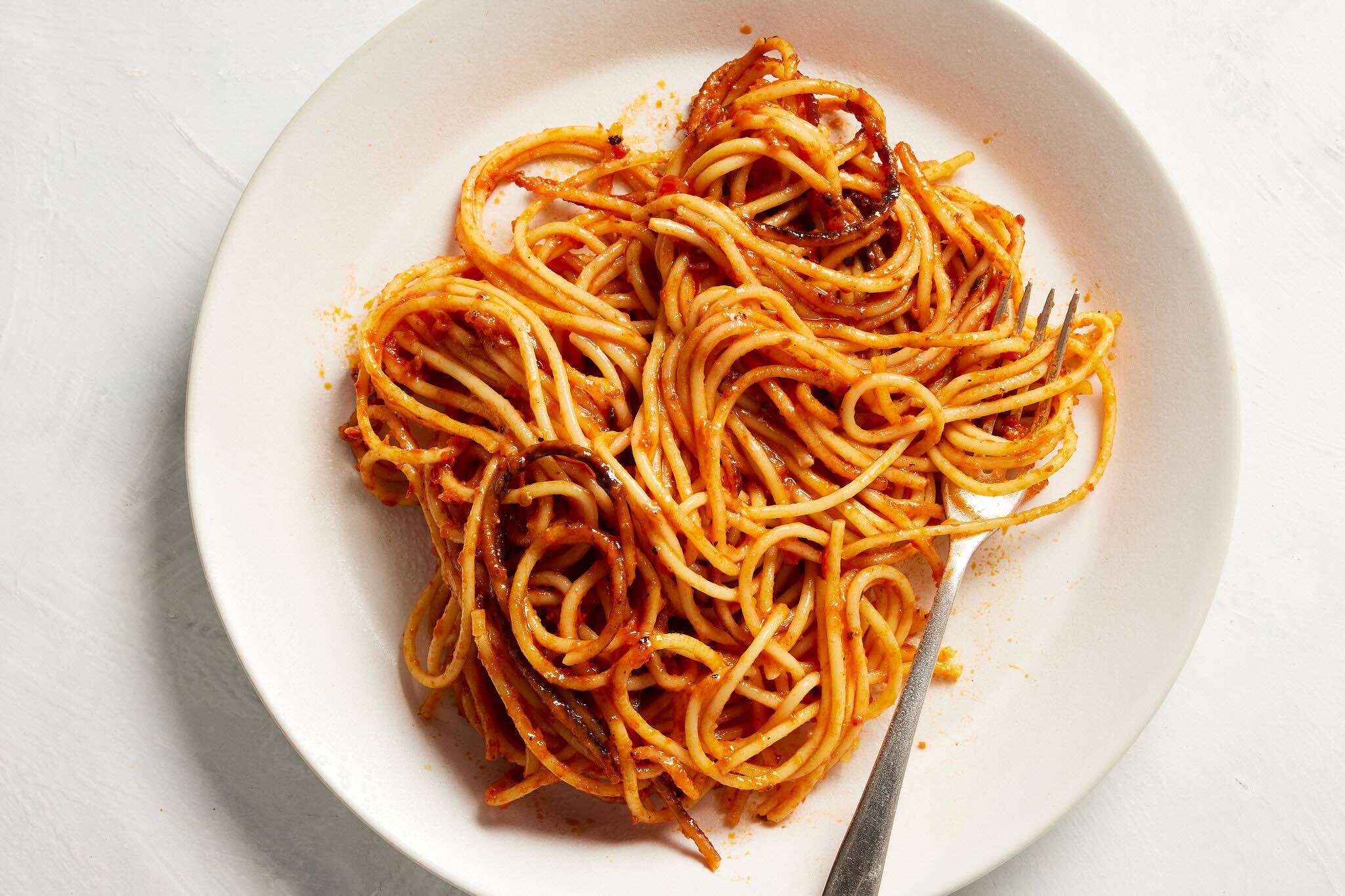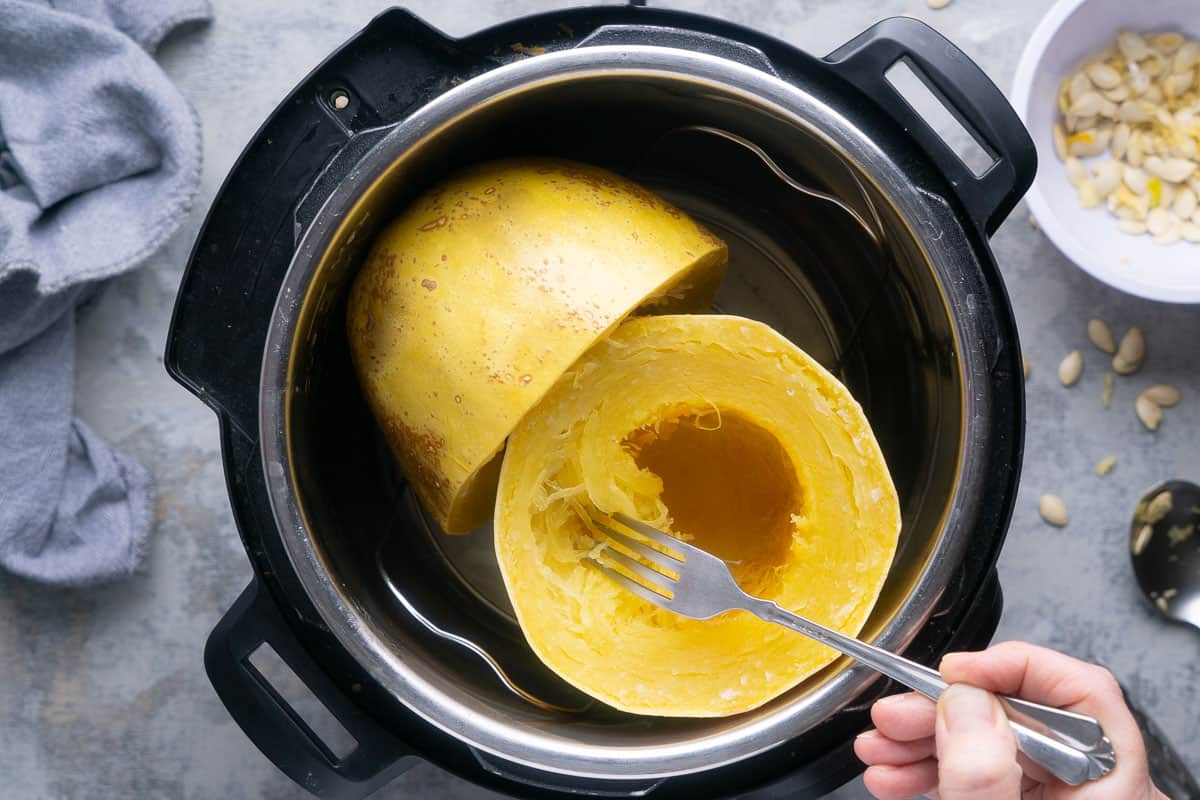

Articles
How To Store Spaghetti Squash Long Term
Modified: January 8, 2024
Learn how to store spaghetti squash long term with these helpful articles. Keep your squash fresh and delicious for months.
(Many of the links in this article redirect to a specific reviewed product. Your purchase of these products through affiliate links helps to generate commission for Storables.com, at no extra cost. Learn more)
Introduction
Spaghetti squash is a versatile and delicious vegetable that has gained popularity in recent years. Its unique texture and mild flavor make it an excellent substitute for traditional pasta in a variety of dishes. One of the advantages of spaghetti squash is its long shelf life, allowing you to enjoy this nutritious vegetable for weeks or even months after harvesting.
However, storing spaghetti squash long-term requires proper preparation and techniques to maintain its quality and freshness. In this article, we will provide you with step-by-step instructions on how to store spaghetti squash for an extended period of time, whether you’ve harvested it from your own garden or purchased it from a store.
By following these guidelines, you can ensure that your spaghetti squash remains tasty and ready to be used in your favorite recipes, regardless of the season or availability at the local market.
Key Takeaways:
- Choose firm, vibrant, and blemish-free spaghetti squash for long-term storage. Properly harvest, cure, and inspect the squash to ensure optimal quality before storing.
- Whether storing whole, freezing, canning, or storing cooked, follow proper techniques and tips to maintain freshness and enjoy spaghetti squash year-round.
Read more: How To Store Spaghetti Long Term
Choosing the Right Squash
When it comes to storing spaghetti squash long-term, it’s crucial to start with a good quality squash. Here are a few tips to help you choose the right one:
- Look for a firm squash: A good spaghetti squash should feel heavy and firm to the touch. Avoid squash that has soft spots or feels lightweight, as these are signs of spoilage.
- Check the color: The ideal color of a spaghetti squash varies depending on the variety. Look for squash with a vibrant yellow or orange color, avoiding squash that appears green or pale. The color of the skin is an indicator of its ripeness.
- Examine the skin: The skin of the squash should be smooth and free from blemishes or cracks. Avoid squash with damaged skin, as it can lead to faster spoilage.
- Consider the size: Spaghetti squash comes in different sizes, ranging from small to large. Choose a size that suits your needs, keeping in mind that larger squash tend to have more flesh and can be stored for a longer period of time.
By selecting a high-quality spaghetti squash, you are laying the foundation for successful long-term storage. Remember that freshness is key when it comes to preserving the flavor and texture of this versatile vegetable.
Harvesting and Preparing the Squash
Before storing spaghetti squash, it’s important to properly harvest and prepare it. Here’s how:
- Timing the harvest: Spaghetti squash is typically ready for harvest when the skin has turned a deep yellow or orange color and the rind is hard. Check the recommended maturity date for the specific variety you are growing or refer to the instructions provided by your supplier. Harvesting too early can result in underripe squash that won’t store well.
- Cutting the squash: Use a sharp knife or garden shears to cut the squash from the vine, leaving a few inches of the stem intact. Handle the squash with care to avoid bruising or damaging the skin, as this can lead to spoilage during storage.
- Cleaning the squash: Gently brush off any dirt or debris from the surface of the squash. Avoid using water, as excessive moisture can promote mold growth. Allow the squash to air dry before proceeding.
- Curing the squash: Curing is an essential step in preparing spaghetti squash for long-term storage. Place the harvested squash in a warm, dry area with good air circulation for 7-10 days. This process helps the squash develop a hard skin and improves its flavor and texture.
- Trimming and inspecting: After the curing period, carefully trim off any remaining stem or vine attached to the squash. Inspect each squash for any signs of damage or rot. Discard any squash that shows signs of spoilage, as it can affect the neighboring squash during storage.
By following these steps, you set the stage for successful storage and ensure that your spaghetti squash is in the best possible condition for long-term preservation.
Storing the Squash Whole
If you prefer to store spaghetti squash in its whole form, there are a few methods you can use to keep it fresh for an extended period:
- Cool and dry storage: Find a cool and dry area in your home, such as a pantry or cellar, where the temperature is around 50-55°F (10-13°C). Place the squash on a shelf or a wooden surface, ensuring that they have enough space for air circulation.
- Avoid direct contact: To prevent squash from touching each other, you can place a layer of newspaper or a soft cloth between them. This helps prevent moisture buildup and reduces the risk of one spoiled squash affecting the others.
- Regular monitoring: Check the squash periodically for any signs of decay, such as mold or soft spots. Remove any squash that has started to spoil to prevent it from affecting the others. With this method, whole spaghetti squash can be stored for several weeks up to a few months.
- Consider the stem: If the stem of the squash is intact, it can help prolong the shelf life. However, if the stem is damaged, it’s best to use the squash first as it may spoil quicker.
By storing spaghetti squash whole, you preserve its natural moisture and avoid excessive exposure to air. This method is ideal if you have a large harvest or purchased a bulk amount of squash and want to enjoy them gradually over time.
Freezing Spaghetti Squash
If you have an abundance of spaghetti squash and want to store it for an extended period, freezing is a great option. Here’s how to freeze spaghetti squash:
- Cook the squash: Start by cooking the spaghetti squash. You can do this by baking, steaming, or microwaving it until the flesh is tender. Cut the squash in half lengthwise, remove the seeds, and place it in a baking dish or microwave-safe container.
- Scoop out the flesh: Once the squash is cooked, use a fork to gently scrape out the strands of spaghetti-like flesh from the inside of the squash. Place the strands in a bowl or colander and allow any excess moisture to drain off.
- Portion the squash: Divide the spaghetti squash into portions suitable for your needs. It’s recommended to portion it based on the amount you typically use in recipes to avoid wasting any leftovers.
- Package for freezing: Place each portion of spaghetti squash into individual airtight freezer bags or containers. Remove as much air as possible from the packaging to minimize freezer burn.
- Label and freeze: Write the date and contents on each freezer bag or container before placing them in the freezer. This makes it easier to identify and use the spaghetti squash later on.
- Freeze flat (optional): To save space in your freezer, you can freeze the spaghetti squash flat on a baking sheet before transferring them to stackable containers. This prevents them from sticking together and allows you to easily separate the portions when needed.
When you are ready to use the frozen spaghetti squash, simply thaw it in the refrigerator overnight or defrost it using the microwave. It can be used in various recipes, such as stir-fries, casseroles, or as a pasta substitute.
Freezing spaghetti squash is a convenient method to extend the shelf life and enjoy the flavors of this versatile vegetable throughout the year.
After cooking and shredding the spaghetti squash, store it in an airtight container in the refrigerator for up to 5 days or in the freezer for up to 6 months.
Read more: How To Store Spaghetti Squash
Canning Spaghetti Squash
If you’re looking for a method to store spaghetti squash that doesn’t require freezing, canning is a viable option. Canning allows you to preserve the squash in jars, making it shelf-stable and ready to use whenever you need it. Here’s how to can spaghetti squash:
- Prepare the jars: Start by sterilizing the canning jars and lids according to the manufacturer’s instructions. Ensure they are clean and free from any cracks or damages.
- Cook the squash: Similar to freezing, begin by cooking the spaghetti squash until it is tender. The cooking method can be baking, steaming, or microwaving, as mentioned earlier. Once cooked, let the squash cool slightly before handling.
- Remove the flesh: Cut the cooked spaghetti squash in half lengthwise and use a fork to scrape out the strands of flesh. Place the strands into clean, hot canning jars, leaving a 1-inch headspace at the top.
- Add hot water or broth (optional): If desired, you can add hot water or vegetable broth to the jars, covering the spaghetti squash. This helps maintain moisture and flavor during the canning process.
- Seal the jars: Wipe the rims of the jars to remove any food residue or moisture. Place the lids and screw on the bands until they are fingertip tight. Ensure not to over-tighten, as air needs to escape during the canning process.
- Process the jars: Place the filled jars in a canner or a large pot with a rack. Fill the canner with enough water to cover the jars by at least 1 inch. Bring the water to a boil and process the jars for the recommended time based on your altitude and jar size. Refer to reputable canning resources for accurate processing times.
- Cool and store: After the processing time is complete, turn off the heat and carefully remove the jars from the canner. Place them on a towel-lined surface and let them cool undisturbed. As the jars cool, you will hear the lids pop, indicating a proper seal. Once fully cooled, store the jars in a cool, dark place for long-term storage.
When you’re ready to use the canned spaghetti squash, simply open a jar, drain any excess liquid, and add it to your favorite recipes.
Canning spaghetti squash is a great option if you prefer a pantry staple that doesn’t require freezing or refrigeration. It allows you to enjoy the flavors of harvested squash throughout the year.
Storing Cooked Spaghetti Squash
If you have cooked spaghetti squash that you want to store for later use, there are several methods to help maintain its flavor and texture. Here’s how to store cooked spaghetti squash:
- Cool down the squash: Allow the cooked spaghetti squash to cool completely before transferring it to storage containers. This helps prevent condensation and moisture buildup, which can lead to spoilage.
- Divide into portions: Depending on your needs, divide the cooked squash into portion sizes suitable for your recipes. This makes it easier to grab the desired amount without thawing or reheating more than necessary.
- Airtight containers: Place the cooked spaghetti squash portions into airtight containers or resealable freezer bags. Press out any excess air before sealing to minimize the risk of freezer burn.
- Label and date: Clearly label the containers or bags with the contents and the date of storage. This helps you keep track of freshness and prevents confusion later on.
- Freezer storage: If you plan to store cooked spaghetti squash in the freezer, lay the portioned containers flat in the freezer until they are completely frozen. Once frozen, you can stack them to save space.
- Refrigerator storage: For short-term storage of cooked spaghetti squash, place the airtight containers in the refrigerator. It can generally last for 3-5 days in the fridge.
- Thawing and reheating: When you’re ready to use the stored cooked spaghetti squash, thaw it in the refrigerator overnight or use the defrost setting on your microwave. Heat it gently in a skillet or microwave until warmed through.
Storing cooked spaghetti squash allows you to save time and enjoy the convenience of having it readily available for meals. Whether in the freezer or refrigerator, proper storage techniques ensure that the cooked squash retains its flavor and texture for future use.
Tips for Maintaining Freshness
To keep your spaghetti squash fresh for as long as possible, there are a few additional tips you can follow. Here are some useful strategies for maintaining freshness:
- Handle with care: When handling spaghetti squash, be gentle to avoid bruising or damaging the skin. Any cuts or punctures can lead to quicker spoilage.
- Store away from ethylene-producing foods: Ethylene is a gas produced by certain fruits and vegetables, which can accelerate the ripening process and cause spoilage in other produce. Keep your spaghetti squash away from ethylene-producing foods like apples, bananas, and tomatoes.
- Avoid direct sunlight: Spaghetti squash should be stored in a cool, dark place. Exposure to direct sunlight can cause premature ripening and spoilage.
- Check regularly: Periodically inspect your stored spaghetti squash for any signs of spoilage, such as soft spots, mold, or a foul odor. Remove and discard any affected squash to prevent further contamination.
- Rotate the stock: If you’re storing multiple spaghetti squash, make sure to use the older ones first. This helps avoid waste and ensures you enjoy the freshest squash available.
- Don’t wash the squash before storage: Unless the squash is visibly dirty, it’s best not to wash it before storage. Excess moisture can promote mold growth and spoilage. Instead, gently brush off any dirt or debris from the surface.
- Follow proper canning or freezing techniques: If you choose to can or freeze spaghetti squash, be sure to follow proper techniques such as sterilizing jars, using suitable containers, and adhering to recommended processing times. This guarantees the best results for long-term storage.
- Keep track of storage time: Whether you store spaghetti squash whole, cooked, canned, or frozen, it’s essential to keep track of the storage time. Labeling containers with dates can help you prioritize usage and ensure freshness.
By following these tips, you can maximize the shelf life and maintain the quality of your spaghetti squash, ensuring a delicious and nutritious experience whenever you choose to enjoy it.
Conclusion
Storing spaghetti squash long-term is a great way to preserve this nutritious and versatile vegetable for future use. Whether you have harvested it from your own garden or purchased it from a store, proper storage techniques are crucial to maintain its quality and freshness.
Choosing the right squash, harvesting and preparing it properly, and employing the appropriate storage methods are essential steps to ensure its longevity. Whether you opt to store the squash whole, freeze it, can it, or store it cooked, each method has its benefits and considerations.
By following the guidelines provided in this article, you can extend the shelf life of spaghetti squash and have a stash of this tasty vegetable at your fingertips, ready to be used whenever you desire. From comforting pasta dishes to refreshing salads, spaghetti squash offers a healthy alternative to traditional noodles, and having it on hand allows you to enjoy its flavors even when it’s out of season.
Remember to handle the squash with care, store it in appropriate conditions, and regularly check for signs of spoilage. By implementing these tips and techniques, you can maintain the freshness of spaghetti squash and continue to savor its flavors and textures in your favorite recipes.
So, go ahead and confidently store your spaghetti squash for the long term, knowing that you can enjoy its deliciousness any time you desire, adding a healthy and flavorful twist to your meals throughout the year.
Ready to keep more than just spaghetti squash fresh? Dive into our upcoming article about the most effective methods and gadgets for preserving all sorts of food. You’ll find savvy solutions that ensure your groceries stay fresher longer, saving you money and reducing waste. Whether you're a culinary novice or a seasoned chef, these insights on food storage are indispensable for anyone aiming to optimize their kitchen efficiency in 2024.
Frequently Asked Questions about How To Store Spaghetti Squash Long Term
Was this page helpful?
At Storables.com, we guarantee accurate and reliable information. Our content, validated by Expert Board Contributors, is crafted following stringent Editorial Policies. We're committed to providing you with well-researched, expert-backed insights for all your informational needs.















0 thoughts on “How To Store Spaghetti Squash Long Term”